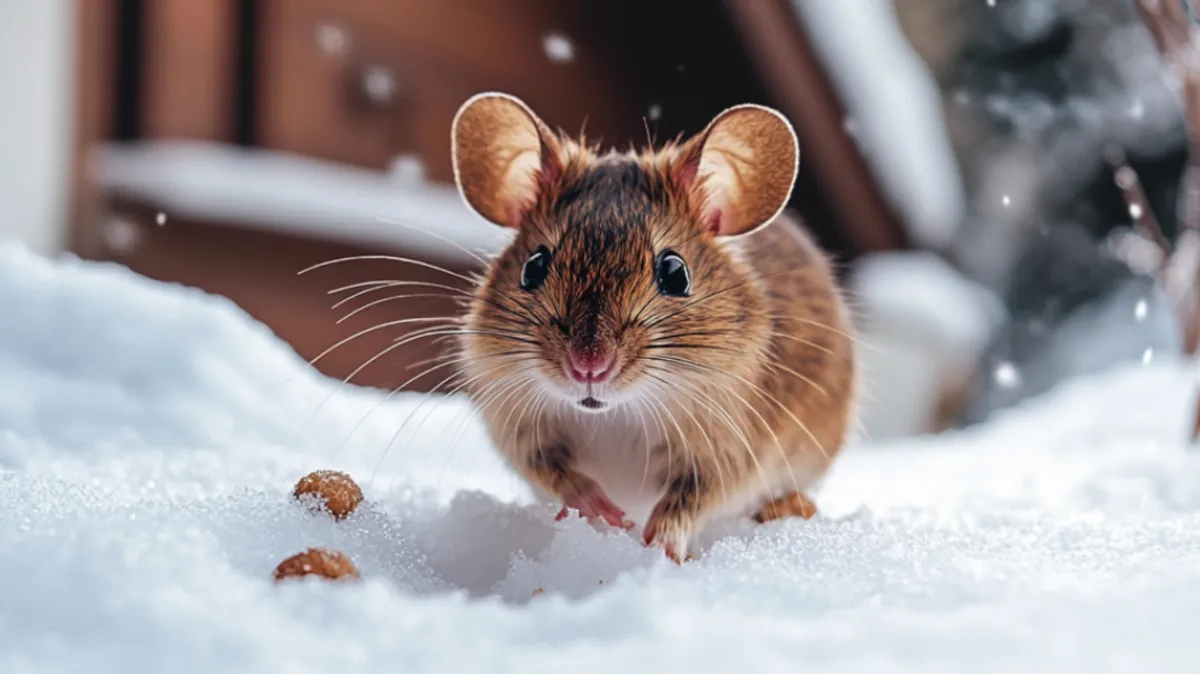The Shield Pest Journal
Check out Shield Pest Appalachia’s most recent blog posts for helpful pest prevention and control suggestions. Our blog covers from detecting common pests to creating tailored solutions in the Tennessee and Virginia areas. Do you have a pest-related question? Contact us today for experienced guidance and solutions targeted to your specific needs.

Frosty Pests: Mid-Winter Pest Check-In
Common Winter Pests and Management Strategies
Rodents: Rats and mice are notorious for seeking refuge from the frosty weather inside cozy homes. These pests can enter through tiny openings, seeking warmth and food. To combat these unwelcome guests:
Seal Entry Points: Conduct thorough inspections of your home’s exterior to identify and seal up any cracks or holes. Pay particular attention to areas where utility lines enter.
Set Traps: Place traps in strategic locations such as the attic, basement, and garage, where rodents are most likely to hide.
Regular Inspections: Keeping an eye on these areas can help catch an infestation early, preventing widespread damage.
Cockroaches: These resilient pests thrive in warm environments and can often be found lurking in kitchens and bathrooms during the winter months. To keep cockroaches at bay:
Maintain Cleanliness: Ensure your kitchen and bathrooms are clean and dry.
Store Food Securely: Use airtight containers to store food, reducing attractions for scavenging cockroaches.
Spiders: While generally less active in winter, spiders may seek shelter in undisturbed parts of your home.
Reduce Clutter: Keep closets, attics, and basements clear of clutter to minimize hiding spots and make your home less inviting to these arachnids.
Why Pest Control is Critical in Winter
Maintaining a pest-free home during the colder months is crucial for several reasons:
Health Risks: Pests like rodents can carry diseases transmittable to humans, posing serious health risks.
Property Damage: Pests are notorious for causing damage to your home from the inside out, including chewing through wires, walls, and furniture.
Allergy and Asthma Relief: Common pests such as cockroaches and dust mites are known allergens that can significantly worsen asthma and allergy symptoms, especially when indoor air circulation is reduced.
Pest-Proofing DIY Home Projects
Here’s a practical guide to simple yet effective DIY pest-proofing projects that can make a significant difference:
1. Installing Door Sweeps: Door sweeps are an easy-to-install and cost-effective way to block pests from entering underneath exterior doors. They also help in reducing drafts and saving on heating costs.
Materials Needed: Door sweep, screws, drill.
Installation: Measure the width of your door, cut the door sweep to size if necessary, and attach it to the bottom of the door using screws. Ensure it makes tight contact with the threshold for maximum effectiveness.
2. Sealing Gaps with Foam Sealant: Expanding foam sealant is perfect for sealing larger gaps and openings around your home's exterior, such as where utility pipes and wires enter.
Materials Needed: Expanding foam sealant, gloves, eye protection.
Application: Clean and dry the area around the gap. Shake the can well, and spray the foam into the gap, filling it completely but being careful not to overfill as the foam will expand. Allow it to dry and trim any excess with a knife.
3. Weatherproofing Windows and Doors: Weatherproofing your windows and doors can prevent cold air, moisture, and pests from entering your home.
Materials Needed: Weatherstripping, caulking, window insulation film.
Steps:
Weatherstripping: Apply self-adhesive strips around the movable parts of windows and doors to seal gaps.
Caulking: Use caulk to seal the non-movable parts of windows and doors, such as where the frame meets the wall.
Insulation Film: For added insulation on particularly drafty windows, apply an insulation film. This creates an air pocket that acts as an additional barrier against cold and pests.
Benefits of These DIY Projects:
Enhanced Pest Control: By eliminating entry points, you significantly reduce the chances of pests entering your home.
Increased Comfort: Sealing gaps and adding insulation can help maintain a more consistent and comfortable indoor temperature.
Cost Savings: These improvements can reduce your heating bills by preventing warm air from escaping and cold air from entering.
Winter Pest Myths Debunked
Here’s a breakdown of some common winter pest myths and the real facts you need to know:
Myth 1: Pests Die Off in Winter
Fact: While it's true that many insects, like mosquitoes and flies, are less active in winter, they don't necessarily die off. Many pests, including rodents, spiders, and cockroaches, seek warmth and shelter indoors during the cold months. Others, like some insects, enter a hibernation-like state called diapause to survive until warmer temperatures return.
Myth 2: My Home is Too Clean to Attract Pests in Winter
Fact: Pests aren’t just attracted to unclean environments; they are also looking for shelter and warmth. A clean house can still provide the ideal conditions for pests like mice, rats, and even ants if they find accessible entry points. Ensuring your home is both clean and well-sealed is key to preventing an infestation.
Myth 3: Once It Freezes Outside, I Won’t Have Any Pest Problems
Fact: A common misconception is that the first freeze of the season means pests will disappear. In reality, this is often the push that drives them indoors. The onset of cold weather can trigger a survival instinct in pests to find a cozy and warm environment, which might just be your home.
Myth 4: I Don’t Need Pest Control in the Winter
Fact: Pest control is a year-round necessity. Winter pest control focuses on prevention by sealing up your home to keep pests out and monitoring for any activity. It's easier to prevent an infestation than to try to manage one after pests have settled in.
Myth 5: Winter Pests Aren’t Dangerous
Fact: Winter pests, like rodents, can pose significant health risks by carrying diseases. They can also cause considerable damage to your home by gnawing on wires, wood, and other structural components.
Shield Pest Appalachia’s Winter Services
To address the challenges of winter pest control, Shield Pest Appalachia offers specialized services in Johnson city tailored to the season:
Interior Inspections and Treatments: Our experts conduct detailed inspections to identify any signs of infestation or areas vulnerable to future pest problems, applying treatments as needed.
Exclusion Work: A critical component of our winter strategy involves sealing off potential entry points. This preventive measure keeps new pests from entering your home.
Follow-Up and Monitoring: Effective pest control doesn’t end with treatment. We provide ongoing monitoring and follow-up visits to ensure that your home remains pest-free throughout the winter months.
Start the New Year Right
Don’t let pests put a damper on your winter comfort. Contact Shield Pest Appalachia to learn more about our effective winter services in Johnson city. With our help, you can enjoy a healthier, pest-free home and start 2025 on the right foot. Let’s work together to make the new year pest-free!
Office:
1300 University Pkwy, Johnson City, TN 37604, United States
Call
423-379-2775
Copyright 2024. All Right Reserved.

